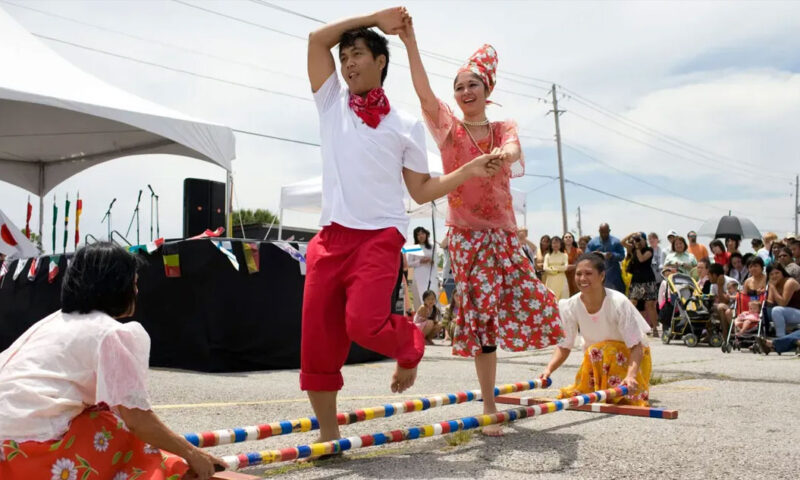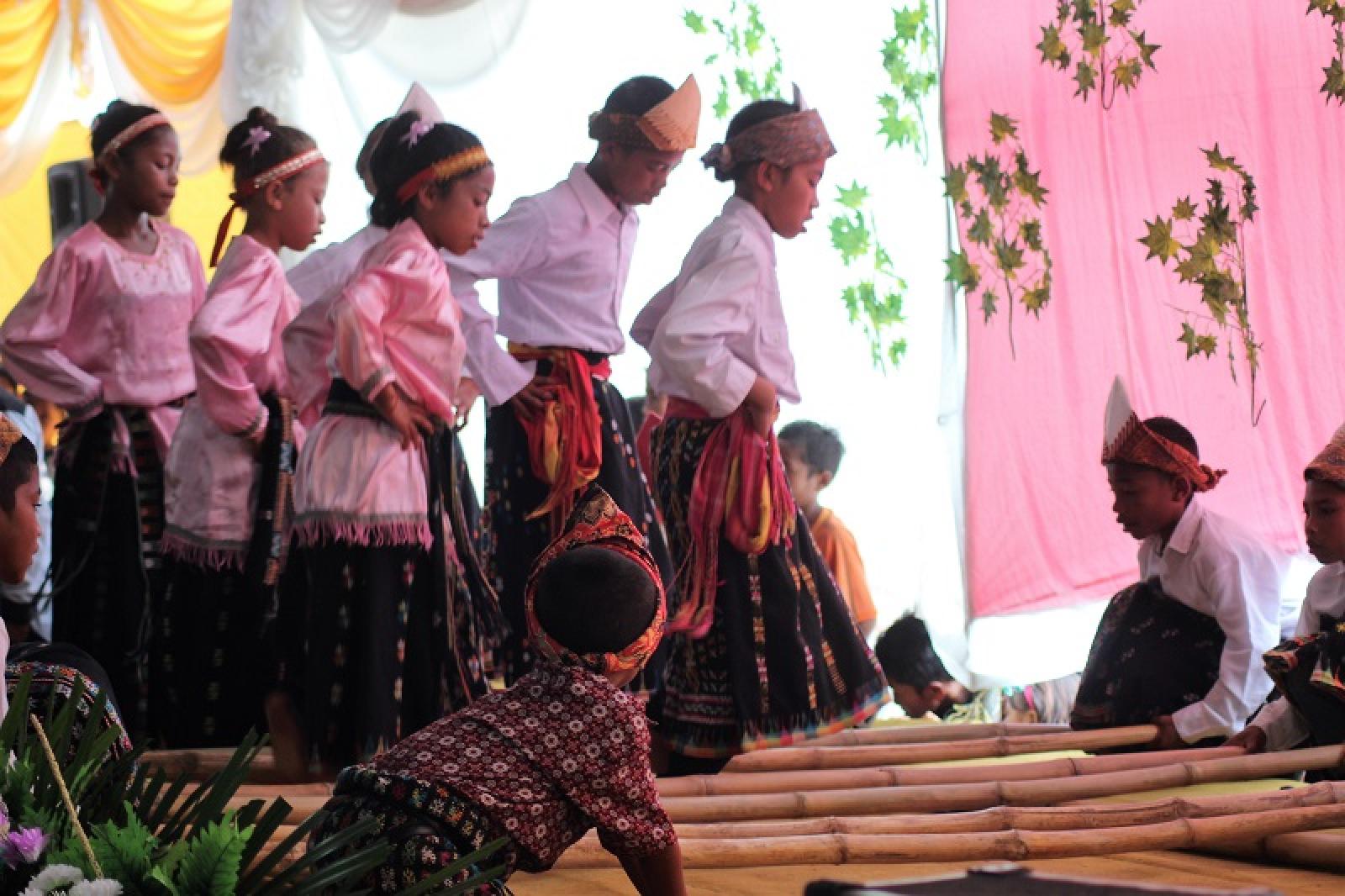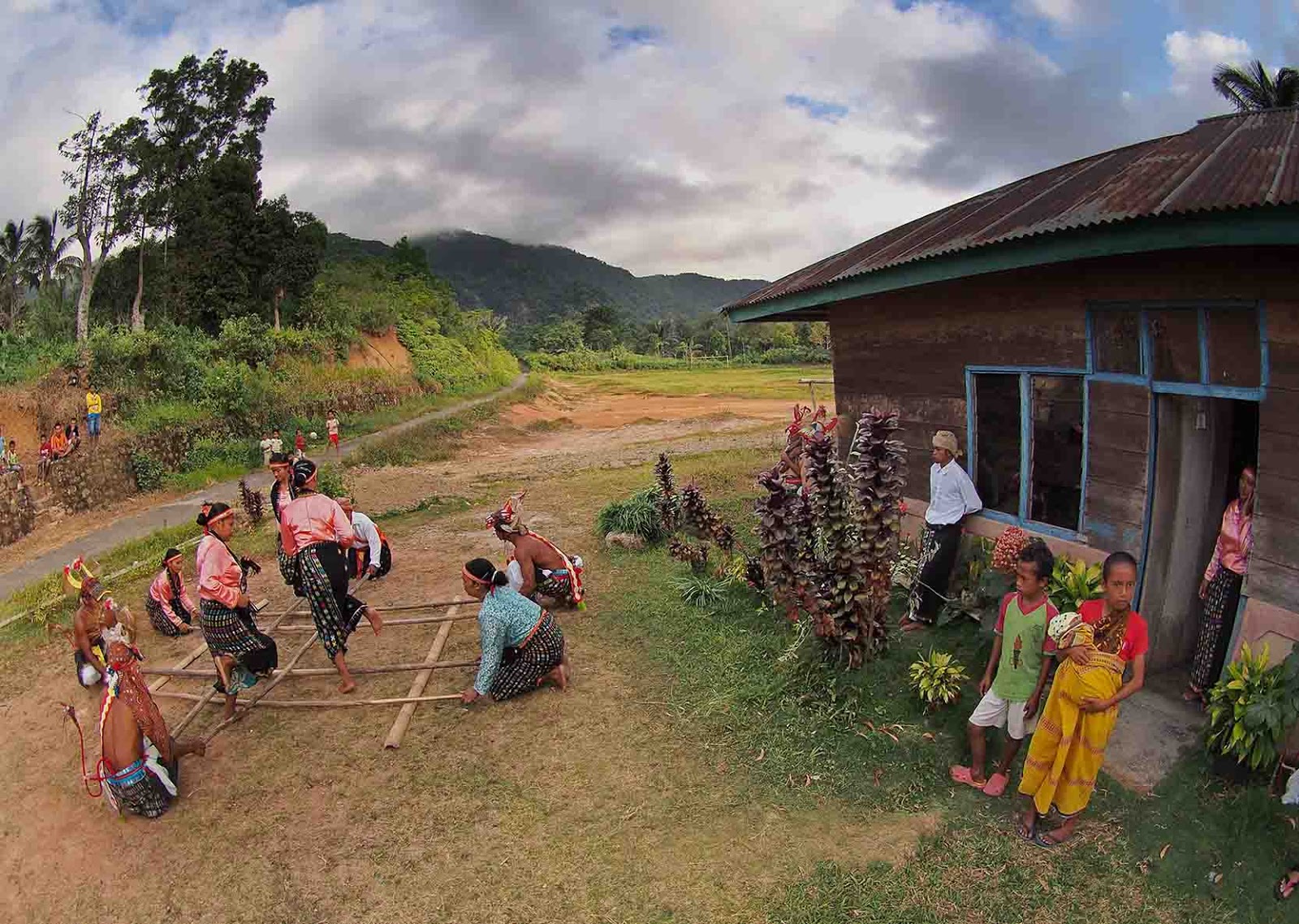Contents
Tari Rangkuk Alu, also known as the Pestle Dance, is a traditional dance originating from the Minangkabau region in West Sumatra, Indonesia. This dance is not just a cultural expression but also a symbolic representation of community values and social cohesion among the Minangkabau people. Rich in symbolism and performed with great enthusiasm, Tari Rangkuk Alu offers a window into the agricultural lifestyle and communal practices of its people.

Tari Rangkuk Alu
Origins and Cultural Significance
Tari Rangkuk Alu was traditionally performed by the women of the Minangkabau villages at the end of the rice harvest season. It originated as a form of communal celebration and thanksgiving for a bountiful harvest. The dance gets its name from the “rangkuk” (pestles) used in the performance, which are typical tools used in rice processing. The dance reflects the agricultural practices of the Minangkabau, who are known for their paddy fields and rice production.
The performance is deeply embedded in Minangkabau social traditions, which are matrilineal, meaning property and family names are inherited through female lineage. This cultural aspect is subtly reflected in the prominence of female dancers in Tari Rangkuk Alu, symbolizing their important role in Minang society.
Performance and Choreography
Tari Rangkuk Alu is performed by a group of women, who dance in a circle while rhythmically pounding the ground with their pestles and performing synchronized movements. The choreography is intricate and requires a high degree of coordination among the dancers. The dance is usually accompanied by traditional Minangkabau music, including drums and flutes, which guide the tempo and intensity of the dance.
The dancers wear traditional Minangkabau attire, which is colorful and richly embroidered. The costume not only adds to the visual appeal of the dance but also represents the cultural heritage and artistic craftsmanship of the Minangkabau people.
Symbolism in the Dance
Each element of Tari Rangkuk Alu is symbolic. The use of pestles, for instance, represents the agricultural roots of the Minangkabau community. The circular formation of the dance symbolizes unity and the cyclical nature of life and seasons. The rhythmic beating of the pestles against the ground is thought to symbolize the effort and toil involved in rice cultivation, as well as the communal spirit of working together for a common goal.

Tari Rangkuk Alu
Contemporary Relevance and Preservation
In modern times, Tari Rangkuk Alu has transcended its origins to become a symbol of Minangkabau culture more broadly, celebrated not only in West Sumatra but also in other parts of Indonesia and around the world where Minangkabau communities reside. It is performed at cultural festivals, ceremonies, and tourist events, serving as an ambassador of Minangkabau culture.
Efforts to preserve this dance are crucial, as it is an integral part of the cultural identity of the Minangkabau people. Cultural practitioners and local governments work together to ensure that the dance is passed down to younger generations, maintaining its practice and teaching its historical and cultural significances.
Tari Rangkuk Alu is more than just a dance; it is a celebration of life, community, and cultural heritage. It encapsulates the spirit of the Minangkabau people and their deep connection to the land and each other. As this dance continues to be performed and cherished, it remains a vibrant, living testament to the rich cultural tapestry of Indonesia.
The Strengths and Challenges of Tari Rangkuk Alu
Tari Rangkuk Alu, a traditional Minangkabau dance from West Sumatra, Indonesia, is a compelling expression of cultural heritage and communal values. Known for its unique use of pestles as goltogel props and its symbolic portrayal of agricultural life, this dance offers both significant benefits and faces particular challenges in the modern world. In this article, we explore the advantages and disadvantages associated with Tari Rangkuk Alu, shedding light on its relevance and resilience in contemporary society.

Tari Rangkuk
Advantages of Tari Rangkuk Alu
- Cultural Preservation and Identity: Tari Rangkuk Alu plays a crucial role in preserving the Minangkabau culture. By performing this dance, communities can maintain and celebrate their unique traditions and customs, which might otherwise be at risk of fading in a rapidly globalizing world. The dance helps to strengthen cultural identity among the Minangkabau people, especially among the younger generations.
- Community Unity: The performance of Tari Rangkuk Alu requires a high level of coordination and cooperation among dancers, reflecting the communal values of the Minangkabau society. This aspect of the dance fosters teamwork and unity, essential qualities in maintaining the strong communal ties for which Minangkabau people are known.
- Educational Tool: This dance serves as an educational tool, offering insights into the agricultural practices and social structures of the Minangkabau. For audiences outside West Sumatra, it provides a window into the region’s cultural landscape, promoting greater understanding and appreciation of cultural diversity.
- Tourism and Economic Benefits: As a cultural attraction, Tari Rangkuk Alu draws tourists interested in learning about and experiencing authentic Minangkabau culture. This interest can boost local economies, providing financial benefits to communities through cultural tourism.
Challenges of Tari Rangkuk Alu
- Cultural Dilution: As Tari Rangkuk Alu gains popularity beyond its traditional settings, there is a risk of cultural dilution. The need to appeal to broader, often more commercial audiences can lead to modifications in the dance that may stray from its original meanings and purposes.
- Transmission to Younger Generations: Ensuring the transfer of knowledge and skills related to Tari Rangkuk Alu to younger generations is a significant challenge. Modern lifestyles and the allure of contemporary entertainment forms can lead to a declining interest in traditional dances among the youth, threatening the continuity of this cultural practice.
- Financial Constraints: Sustaining traditional arts often requires funding, which can be limited. Costs associated with training, costumes, and performances can be prohibitive, especially for communities with limited resources. Without adequate support, maintaining the quality and frequency of performances can be challenging.
- Limited Global Recognition: While Tari Rangkuk Alu is a symbol of Minangkabau culture, it does not enjoy as wide recognition as other Indonesian cultural exports like Balinese dance. This limited recognition can impact the opportunities available for showcasing this tradition on global stages.
Conclusion
Tari Rangkuk Alu is a dance that beautifully encapsulates the cultural, social, and agricultural heritage of the Minangkabau people. While it offers significant benefits in terms of cultural preservation and community cohesion, it also faces challenges that need to be addressed to ensure its sustainability and relevance. With targeted efforts and support, Tari Rangkuk Alu can continue to thrive as a cherished cultural practice, celebrated not just in Indonesia but around the world.
Read More Article About “RAPID MOBILIZATION IN MODERN POLITICS: DYNAMICS AND IMPACT“



